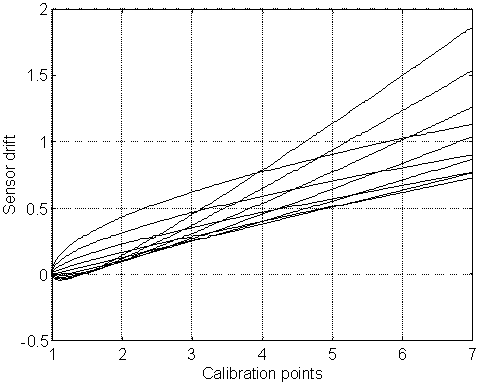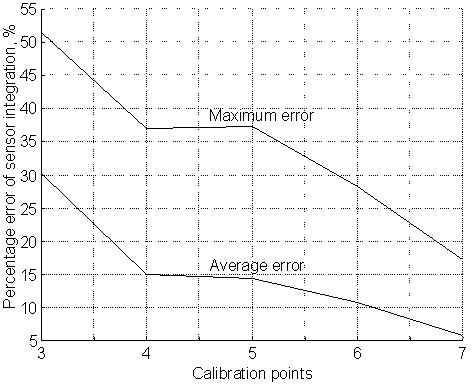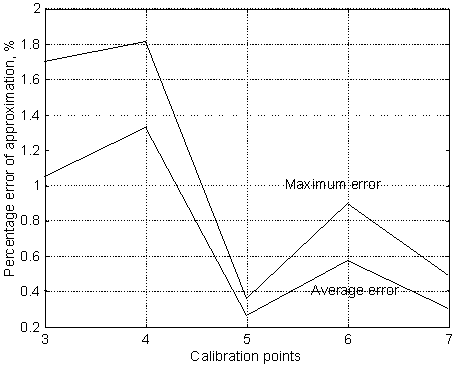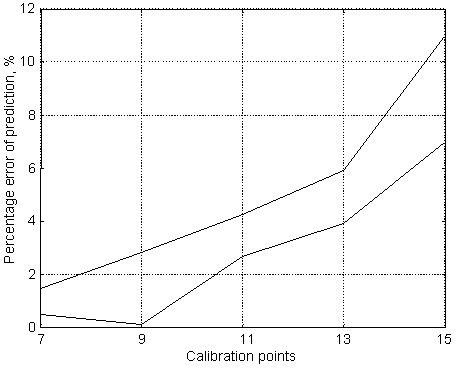
Using Neural Networks in ISIS
 |
Development of an Intelligent Sensing Instrumentation Structure I.S.I.S.
Using Neural Networks in ISIS
|
| Home | The main features | Contradictions | Simulating of drifts | Combination of drifts | Error correction |
|
Combination of drifts
The third set of curves simulating a combination of two previous kinds of drifts is presented on
Figure 7. The drift velocity of one part of sensors is increased and the velocity of other part
of sensors is reduced in this case. Such kind of drift is not characteristic for the existing
sensors, however it is expedient to research the method's possibilities for such data. As have
researches shown, the model of single-layer perceptron does not provide acceptable results in
this case. It is necessary to use non-linear neural networks for such drift data integration. The
model of three-layer perceptron was used for experiment execution. The first layer of neural network
contains 9 neurones, the second layer contains 9 neurones (with logistic activation function) and the
third level contains one linear neurone. The training of multi-layer perceptron with data from Figure 7
is instability process and has shown different prediction results in calibration points. Therefore
sum-squared error 10Å-4 and maximum training epoch number 30000 limited training per each neural network.
It is necessary to note that the best convergence was shown by layer-by-layer training algorithm. The
average training duration did not exceed 100 seconds per each curve. The maximum and average percentage
errors of data integration (see Figure 8) did not exceed 52% and 30% accordingly.
 Figure 7. Third set of hypothetical data about sensor drift  Figure 8. Percentage integration error of third set of sensor drift  Figure 9. Result of approximation  Figure 10. Result of prediction |